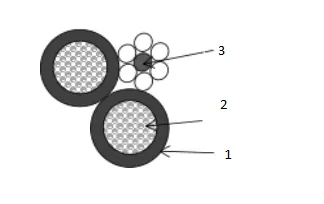നവം . 26, 2024 13:12 Back to list
Industrial Check Valve Applications and Benefits for Fluid Control Systems
Understanding Industrial Check Valves An Essential Component in Fluid Control
In the realm of fluid control systems, industrial check valves play a critical role in ensuring efficiency and safety. These devices, often overlooked, are vital in preventing backflow in a piping system, thus safeguarding equipment and products from potential damage. This article delves into the significance of check valves in industrial applications, their working principles, types, and best practices for selection and maintenance.
What is a Check Valve?
A check valve, also known as a one-way valve, is designed to allow fluid (liquid or gas) to flow in only one direction. This unidirectional flow is crucial in systems where backflow can lead to detrimental effects, including contamination, equipment failure, or even hazardous conditions. Check valves are commonly used in water supply systems, oil and gas industries, chemical processing, and HVAC systems.
Working Principle
The fundamental working principle of a check valve is relatively simple. When the fluid flows in the designated direction, it pushes against a movable element or disc within the valve. This action opens the valve, allowing the fluid to pass through. Conversely, if the fluid attempts to flow backward, the disc is pushed back into its seat, thereby closing the valve and preventing backflow.
There are two primary forces at play in a check valve the flow of the fluid and the weight or spring tension acting on the valve's disc. The design must cater to the specific pressures and flow rates of the system to ensure proper functionality.
Types of Check Valves
Check valves come in various designs, each suited for different applications. The most common types include
1. Swing Check Valves These feature a disc that swings on a hinged mechanism. They are widely used in water systems and are known for their low-pressure drop.
2. Lift Check Valves This type operates like a piston. The disc moves vertically and is ideal for applications requiring a higher flow rate.
industrial check valve

3. Ball Check Valves Utilizing a ball as the sealing mechanism, these valves provide an effective sealing surface and are commonly used in gas applications.
4. Spring-Loaded Check Valves These employ a spring mechanism to keep the valve sealed when there is no flow. They are often used in systems requiring tight sealing.
Selection Criteria
Choosing the right check valve for an application requires careful consideration of several factors
- Flow Direction Ensure the valve is installed correctly to allow for unidirectional flow. - Pressure Ratings The valve should be rated for the maximum pressure of the system to prevent failure. - Temperature Compatibility Different materials have varying tolerances to temperature; select accordingly to ensure durability. - Material Composition The material should be compatible with the fluid being transported to prevent corrosion or contamination. - Size and Diameter Correct sizing is pivotal to maintain the fluid flow and system efficiency.
Maintenance Best Practices
Regular maintenance of check valves can prolong their lifespan and ensure reliability. Here are some best practices
1. Routine Inspections Periodically check valves for signs of wear, corrosion, or improper sealing. 2. Cleaning Depending on the application, debris can accumulate on the sealing surfaces. Regular cleaning helps maintain functionality. 3. Testing Conduct routine tests to ensure that the valve is functioning correctly and that backflow is effectively prevented. 4. Replacement Replace valves that have reached the end of their service life to prevent unexpected failures in the system.
Conclusion
Industrial check valves are a crucial component of fluid control systems, providing safety and efficiency by preventing backflow. Understanding their operation, types, and maintenance requirements is essential for engineers and technicians involved in fluid handling processes. By selecting the appropriate check valve and adhering to best maintenance practices, industries can ensure the reliable and safe operation of their systems. Investing in high-quality check valves and their upkeep can lead to significant long-term benefits, including reduced downtime and increased operational safety.
Share
-
Y Strainers: Protecting Your Pipes with PrecisionNewsAug.27,2025
-
Wafer Type Butterfly Valves: Reliable Flow Control SolutionsNewsAug.27,2025
-
Wafer Type Butterfly Valves: Essential Components for Efficient Flow ControlNewsAug.27,2025
-
Reliable Flow Control with High-Quality Check ValvesNewsAug.27,2025
-
Reliable Flow Control with Gate ValvesNewsAug.27,2025
-
Innovative Check Valves for Reliable Flow ControlNewsAug.27,2025


